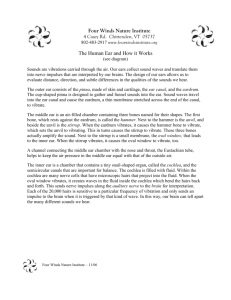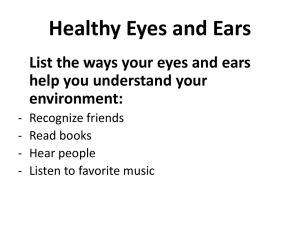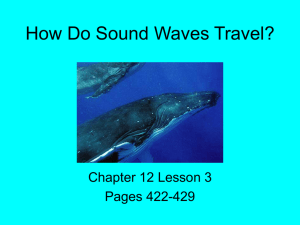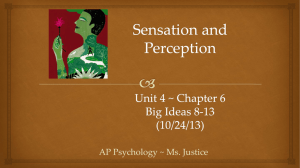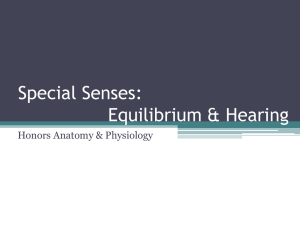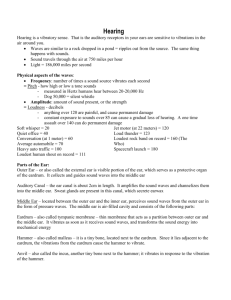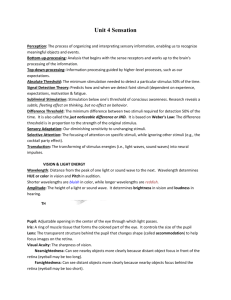The Human Ear (1)
advertisement
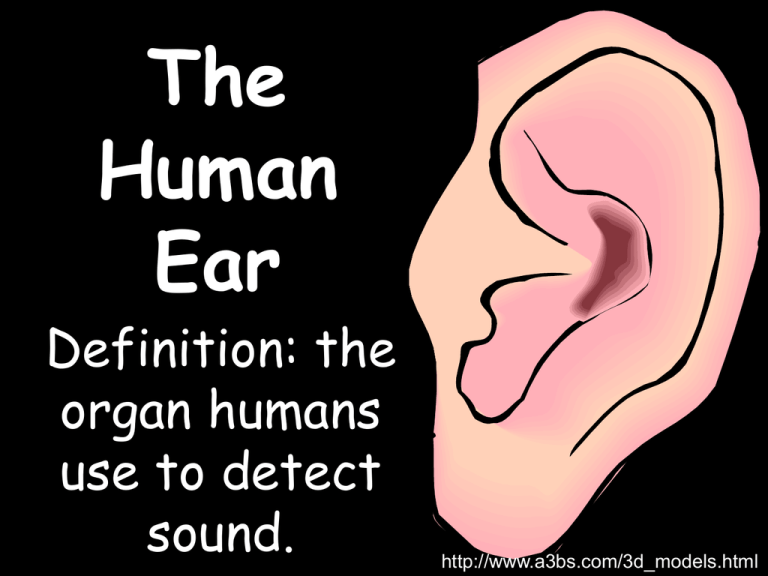
The Human Ear Definition: the organ humans use to detect sound. http://www.a3bs.com/3d_models.html The human ear is divided into three sections. Each part of the ear serves a specific purpose in the task of detecting and interpreting sound. The Outer Ear • Picture a satellite dish that collects radio waves. • The outer ear is similar! – The curved formation on the outside ( the pinna) helps funnel sound down the ear canal to the eardrum. The Middle Ear • The middle ear transfers the energy of a sound wave by vibrating the three bones found there. Bones of the Middle Ear • These are Hammer the smallest bones in your body! • Together, they’re about the size of an orange seed. Eardrum Anvil Stirrup The Stirrup (or stapes) How Sound Travels in the Middle Ear • When sound waves reach the middle ear, they cause the eardrum to vibrate. • This vibration then causes the three bones to vibrate. • These vibrations are transformed into longitudinal/pressure waves in the middle ear. The Inner Ear • Two main parts: –Cochlea –Auditory Nerve The Cochlea • Coiled like a snail shell • Contains approximately 300,000 hair cells • Is filled with fluid, through which sound can travel easily. Cochlear Hair Cells • These tiny hairs bend because of the vibrations caused by the sound waves. Cochlear Hair Cells in Action The Auditory Nerve • The tiny hair cells of the cochlea are set in motion by vibrations • The vibrations stimulate tiny nerve cells. • The nerve cells then send signals along the auditory nerve to the brain. A sound is not actually heard until the brain receives and processes these signals. Let’s start at the very beginning… • http://www.youtube.com/watch?v=CSO7 65hyxrc Put the following steps in order: A. The stirrup moves back and forth, creating pressure waves in the cochlea. B. The bones of the middle ear (hammer, anvil, & stirrup) vibrate. C. Hair cells send an electrical impulse through the auditory nerve. D. The outer part of the ear (the pinna) "catches" the sound waves. E. Sound waves vibrate the eardrum F. The brain receives an electrical impulse and interprets it as sound. G. Tiny hair cells in the cochlea move as the waves pass. H. The sound waves travel into the ear canal. D H E B A G C F
